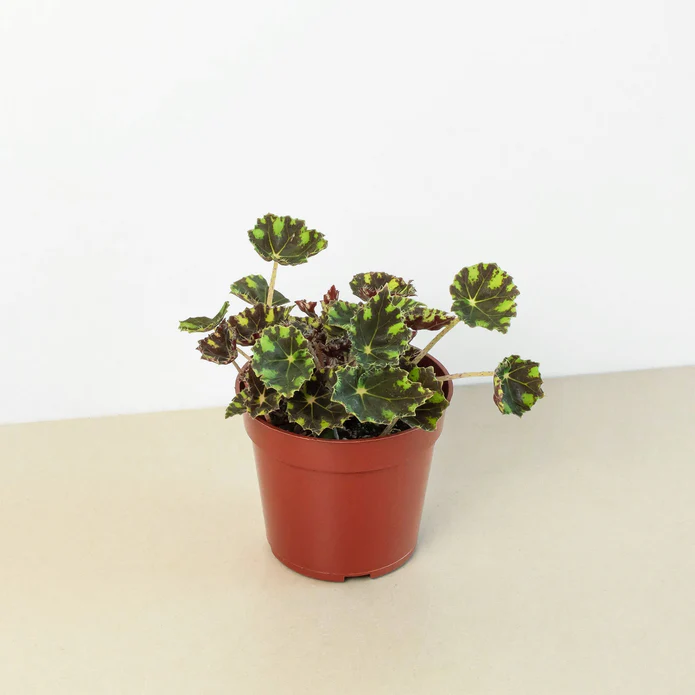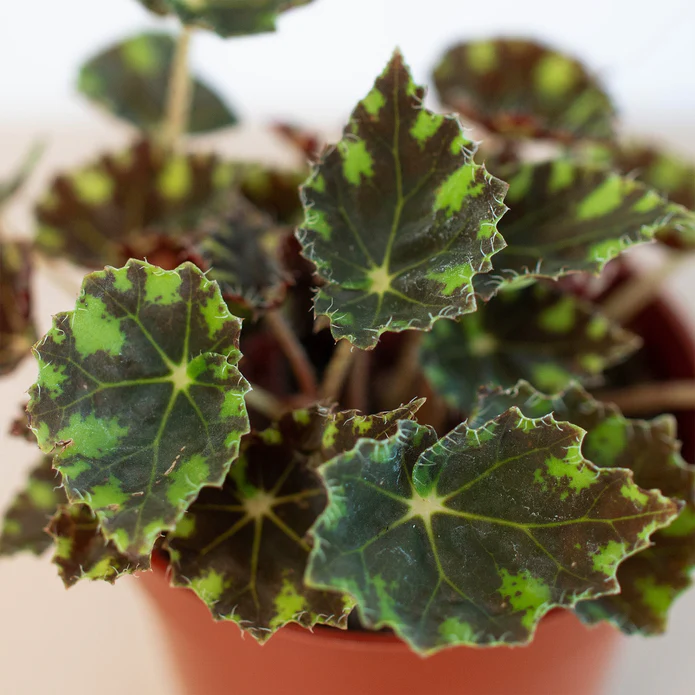Imagine this: You walk into a room, and your eyes are immediately drawn to a plant with leaves so striking, so unique, that you can’t help but stare. That, my friends, is the magic of Begonia Tiger Paws. This isn’t just another pretty leaf – it’s a conversation starter, a mood lifter, and the latest obsession among plant enthusiasts. Let’s dive into why these fierce beauties are taking the indoor gardening world by storm.
On This Page
What Are Begonia Tiger Paws?
Begonia Tiger Paws, scientifically known as Begonia bowerae, are a species of begonia native to Mexico. They get their playful nickname from their distinctively shaped leaves that resemble, you guessed it, tiger paws. But it’s not just the shape that’s captivating – these leaves are adorned with intricate patterns of dark green spots on a lighter green background, creating a mesmerizing visual effect.
Why Are They Suddenly So Popular?
- Instagram-Worthy Aesthetics: In the age of social media, plants that photograph well are king. And boy, do Tiger Paws deliver! Their unique patterns and textures pop in photos, making them a favorite among influencers and home decor enthusiasts.
- Low Maintenance, High Reward: Despite their exotic appearance, Tiger Paws are surprisingly easy to care for. They’re perfect for busy plant parents or those who’ve been known to accidentally neglect their green friends.
- Versatility: These beauties can thrive in various indoor conditions, making them suitable for different home environments.
- Compact Size: Tiger Paws typically stay relatively small, making them ideal for apartments or homes with limited space.
How to Care for Your Begonia Tiger Paws
Light
Tiger Paws prefer bright, indirect light. Think of them as the Goldilocks of the plant world – not too much sun, not too little. A spot near a north or east-facing window is often perfect.
Water
Here’s where many begonia newbies go wrong. Tiger Paws like their soil to be consistently moist but not waterlogged. Water when the top inch of soil feels dry, and always ensure good drainage.
Humidity
These plants love humidity! If you want to see your Tiger Paws truly thrive, consider placing them on a pebble tray or near a humidifier.
Soil
Use a well-draining potting mix. A combination of regular potting soil, perlite, and orchid bark works wonders.
Temperature
Keep your Tiger Paws cozy! They prefer temperatures between 60°F and 75°F (15°C to 24°C).

Troubleshooting Common Issues
Even the fiercest foliage can face challenges. Here are some common problems and how to solve them:
- Yellowing Leaves: Often a sign of overwatering. Cut back on watering and ensure proper drainage.
- Brown Leaf Edges: This usually indicates low humidity. Increase humidity around the plant or mist regularly.
- Leggy Growth: Not enough light. Move your plant to a brighter spot, but avoid direct sunlight.
- Spots on Leaves: If they’re not part of the natural pattern, this could be a fungal issue. Improve air circulation and avoid getting water on the leaves.
The Tiger Paws Experience: A Personal Anecdote
When I brought home my first Tiger Paws plant, I was a bit nervous. Its exotic look made me think it would be high-maintenance. But let me tell you, this plant has been one of the most rewarding additions to my indoor jungle.
Not only does it add a pop of personality to my living room, but it’s also become a great conversation starter. Guests always ask about the “cool spotted plant,” and I get to share my newfound plant knowledge. It’s like having a piece of tropical paradise right in my urban apartment.
Ready to Join the Tiger Paws Club?
If you’re looking to add some fierce foliage to your life, Begonia Tiger Paws are the way to go. They’re beautiful, unique, and surprisingly easy to care for. Plus, they’re a great way to flex your green thumb without committing to a high-maintenance plant.
FAQ: Everything You’ve Ever Wanted to Know About Tiger Paws
Are Begonia Tiger Paws toxic to pets?
Yes, they are mildly toxic if ingested. Keep them out of reach of curious pets and children.
How often should I fertilize my Tiger Paws?
Feed them with a balanced, water-soluble fertilizer every 2-4 weeks during the growing season (spring and summer).
Can I propagate my Tiger Paws?
Absolutely! They can be propagated through stem cuttings or leaf cuttings. It’s a great way to share the love with fellow plant enthusiasts.
Do Tiger Paws flower?
Yes, they can produce small, pink flowers. However, they’re primarily grown for their stunning foliage.
So, are you ready to unleash the tiger in your indoor garden? Trust me, once you go Tiger Paws, you’ll never look back. Happy planting!









